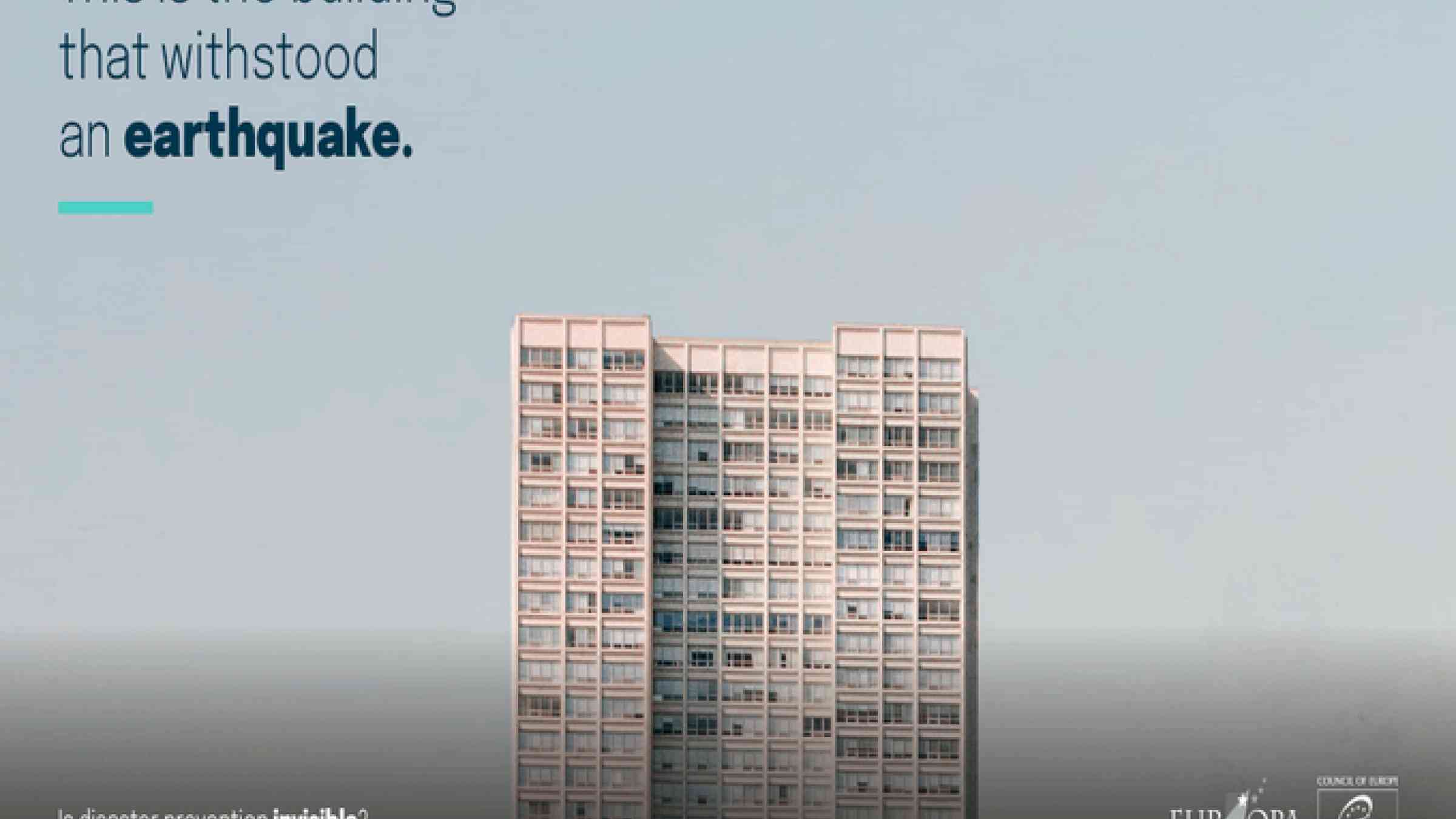EUR-OPA Major Hazards Agreement makes prevention visible with ‘Stand out in Disasters’ campaign

By Bruno Martin
• To celebrate the International Day for Disaster Risk Reduction on October 13th, the EUR-OPA Major Hazards Agreement launches the awareness campaign ‘Stand out in disasters’.
• The campaign highlights landscapes and structures which have survived different disasters in order to draw attention to the prevention and preparedness measures that saved them.
Conversations about disasters tend to focus on the damage and losses that they cause, and how to aid victims. However, a great part of disaster risk reduction policies revolves around the work done before a disaster happens: awareness raising, protection of cultural heritage, coordination in risk governance... These preventive measures are not visible at first, because if done properly, areas can effectively avoid or minimize many of the disaster’s consequences.
To give visibility to effective prevention measures, and coinciding with the International Day for Disaster Risk Reduction, the EUR-OPA Major Hazards Agreement presents ‘Stand out in disasters’, a creative campaign designed to expose how EUR-OPA member states are reshaping disaster stories by putting the spotlight on that which survives due to proper planning. Preventive measures include not only initiatives to avoid natural and technological events turning into disasters, but also effective post-disaster actions and coordinated policies between nations that can minimize damages. The protection of vulnerable groups and cultural heritage are fundamental pillars in EUR-OPA’s work areas, along with climate change impact. Awareness-raising of these hazards is a main goal of the EUR-OPA Agreement, and a serious concern for the Council of Europe which founded the platform. This can only be achieved through education, training and information exchange, both for communities and for experts.
In this campaign, through four interactive posters, a website and other digital materials such as videos and banners that will be shared on social media, EUR-OPA presents the stories of four non-human disaster survivors that were saved thanks to effective preventive measures: The road that escaped a landslide because it ran through a vegetation-banked terrace which avoided the collapse. The building that withstood an earthquake because it rested on a seismic-resistant structure. The coast that was spared from an oil spill and saw its ecosystem preserved thanks to proper equipment of the nearby petroleum tanker. The tree that survived wildfire because it was shielded behind a firebreak. The hashtag #BeReadyStandOut represents their common survivorship: they withstood because they were prepared for disasters and therefore resisted when they happened. These examples have in common the intervention of different EUR-OPA Specialised Centres and their work on prevention, which can be further explored at www.standoutindisasters.eu.
The EUR-OPA Agreement is open to new member states who want to participate, both members and non-members of the Council of Europe. All nations are welcome to join their co-operation efforts towards a better management of disasters. Contact information: EUR-OPA Major Hazards Agreement Krzysztof Zyman, Executive Secretary of EUR-OPA Major Hazards Agreement krzysztof.zyman@coe.int +33 (0) 3 88 41 26 90 (9h–17h CEST, Mon-Fri) Scienseed (Campaign-related inquiries) Bruno Martin, Communications Officer press@scienseed.com +34 684 075 229 (9h–17h CEST, Mon-Fri)
About EUR-OPA
EUR-OPA Major Hazards Agreement is a platform for co-operation in the field of major natural and technological disasters. Its main objectives are to reinforce and to promote information exchange between member states in a multi-disciplinary context to ensure better prevention, protection against risks and preparation in the event of disasters. EUR-OPA was set up by the Committee of Ministers of the Council of Europe in 1987 [Resolution (87)2] and to date it is formed by 25 member states, considering members and non-members of the Council of Europe. New member states are welcome and encouraged to contact EUR-OPA for any inquiries.